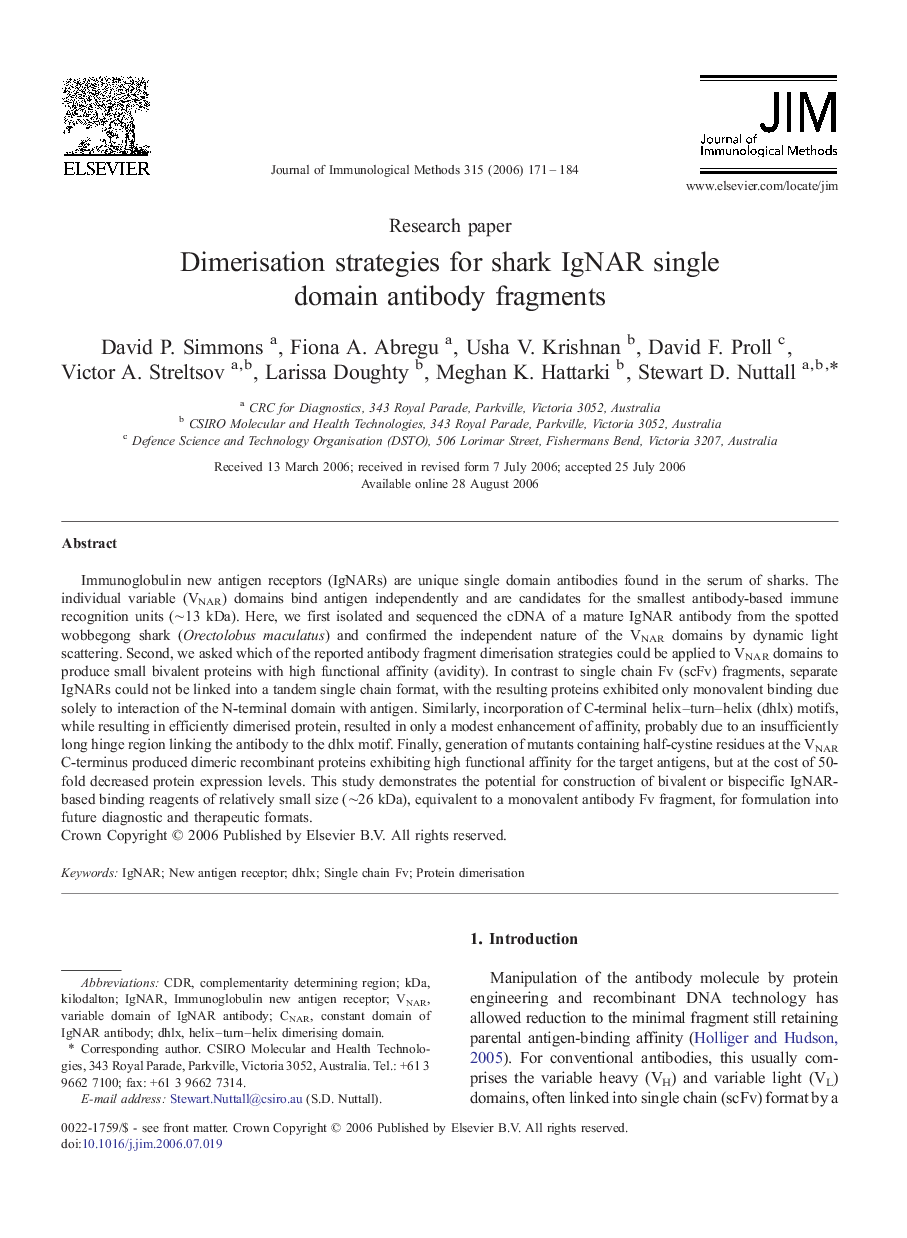| Article ID | Journal | Published Year | Pages | File Type |
|---|---|---|---|---|
| 2089248 | Journal of Immunological Methods | 2006 | 14 Pages |
Immunoglobulin new antigen receptors (IgNARs) are unique single domain antibodies found in the serum of sharks. The individual variable (VNAR) domains bind antigen independently and are candidates for the smallest antibody-based immune recognition units (∼13 kDa). Here, we first isolated and sequenced the cDNA of a mature IgNAR antibody from the spotted wobbegong shark (Orectolobus maculatus) and confirmed the independent nature of the VNAR domains by dynamic light scattering. Second, we asked which of the reported antibody fragment dimerisation strategies could be applied to VNAR domains to produce small bivalent proteins with high functional affinity (avidity). In contrast to single chain Fv (scFv) fragments, separate IgNARs could not be linked into a tandem single chain format, with the resulting proteins exhibited only monovalent binding due solely to interaction of the N-terminal domain with antigen. Similarly, incorporation of C-terminal helix–turn–helix (dhlx) motifs, while resulting in efficiently dimerised protein, resulted in only a modest enhancement of affinity, probably due to an insufficiently long hinge region linking the antibody to the dhlx motif. Finally, generation of mutants containing half-cystine residues at the VNAR C-terminus produced dimeric recombinant proteins exhibiting high functional affinity for the target antigens, but at the cost of 50-fold decreased protein expression levels. This study demonstrates the potential for construction of bivalent or bispecific IgNAR-based binding reagents of relatively small size (∼26 kDa), equivalent to a monovalent antibody Fv fragment, for formulation into future diagnostic and therapeutic formats.
